Go out. Appropriate. Catch the eye. It seems that the time is ripe for a cornucopia of urban interventions, which are intended to focus the attention of beholder on public space, or are simply there for their own sake. Have you encountered a "space invader" over the past week? Perhaps one of those pixelated aliens – designed by Tomohiro Nishikado in 1978 for the eponymous computer game – was eyeballing you from the side of a building – the size of the creature reveals the score the location got, anywhere between 10 and 50. It is now 11 years since an artist from Paris started touring earthlings' cities under the pseudonym of "Invader", leaving behind his mark – a mosaic – wherever he deems "space invading" to be worth his while. However, beware of the fake – there have already been a number of zealous copycats busy at work! If you want to be sure that you are on the trail of the real invader, you should take a look at the number of maps where his interventions are marked or follow the route posted on his website.
German sculptor and artist, Jan Vormann, who is known to invite passersby to join in his interventions, does things a little differently: using Lego bricks as an unexpectedly filling material, he arranges them to create a perfect fit for nooks and crannies in porous façades or holes left behind by bullets. With his project "dispatchwork" he has already repaired walls and introduced a flash of color to buildings in 22 cities, including Lausanne, New York, Amsterdam, St. Petersburg and Berlin. The fleeting façade fixer's secret? He's been fascinated by Lego ever since childhood and thus the bricks are organized according to their shape, meaning that Vormann always knows in which bag to look for the fitting mini-filler.
One is almost inclined to consider these outdoor references to toys and games from the 1970s and 1980s a phenomenon born of a generation that has had a creative upbringing and is now experiencing a longing for nostalgia or a hunger for some kind of evangelizing. Indeed, the medium for the next public intervention enjoyed its heyday during a decade of hippies and self-made twinsets: knitting. Little green hats, a red dress (with white polka dots!), rosy cheeks, always a gentle smile on their face. It was praise and rewards in the form of squares of chocolate, determined by the degree of our ambition, the yardstick of our determination and the length of the end product: the Knitting Jenny. Even back then, how many mothers woefully searched for a way to make use of these bright, meter-long sausages, which – after hours of arduously wrapping the wool around the four needles – emerged from the contraption? How many children were at first so proud of their achievement, a pride that quickly turned into disappointment, when the fruits of their laborious hand-crafting process turned out to be nothing more than the banal cord that linked their mittens?
Today such personal moments of shame may be redeemed with a head held high, as these Knitting Jenny cords could well become part of a new movement – "urban knitting". Originating in the USA this subversive means of resistance, and making the public space a little more cozy, has also attracted a large following in Europe. Plain for everyone to see, "knit art" wraps up trees against the cold, keeps concrete pillars warm, turns street signs into thread carriers – and decorates urban canyons with a rainbow of colors. Also described as "knit graffiti", the start of the movement is attributed to Magda Sayeg, who was frustrated by her own unfinished knitting projects – as is seems other artists were too – and so decided in 2005 to knit a doorknob cozy for the front door of her Boutique, Raye, in Houston. Ever since, the artist has not only brought numerous projects to life but also founded the "Knitta Please" community, inspired by the line commonly heard in gangsta rap.
However the knitting guerillas, most of whom are mostly women, all act out of every different intentions. Some just want their surprises to bring smiling stitches to the faces of passers-by, making them aware of the little absurdities in everyday life. Other groups – such as the "Strickistinnen" from Vienna with their motto "No, waiting around doesn't help. So, we knit – in, on and around." – aim to put a visual image to political connections, emancipating "feminine" handicraft from the private shape and unleashing it like a textile declaration into the public space, putting up resistance to the "public display of masculine virility." Here, tradition becomes a means of rebellion and for many activists represents the expression of the recoding of seemingly fixed symbols, which – not for the first time since Marshall McLuhan and in the rise of social media – raises the question of how the beholder selects from the information transmitted to him or her. How many spontaneous acts of rebellions can be embedded in the intertwined patterns and woolen messages if they have to be rather precise in their preparation and fitting? Above all what is their potential for vandalism? In legal terms "urban knitting" would be considered the "damaging of property which is harmful to the public". In addition, section 304 of the German Criminal Code states: "Whoever unlawfully damages or destroys objects of veneration of a religious society existing in the state or property dedicated to religious service, or tombstones, public monuments, natural monuments, objects of art, science or craft which are kept in public collections or publicly exhibited, or objects which serve a public need or beautify public ways, squares or parks, shall be punished with imprisonment for not more than three years or a fine. (...) Whosoever unlawfully alters the appearance of an object listed under subsection (1) above substantially and permanently shall incur the same penalty (...) An attempt shall be punishable."
It is only in the rarest of cases that any kind of damage arises as the result of knit art, and so the activists currently occupy a legal grey area, particularly since over time the wool frays and tears, unless "in the name of tidiness" someone with a pair of scissors gets to it first. By the way knitting has now arrived in the field of guerrilla marketing too: in March an agency decorated the Bismarck monument in Hamburg with a 20-meter-long, red scarf – promoting a manufacturer of cold and flu remedies ...
A somewhat more belligerent term for these impromptu, knitted objects in public spaces is "yarn bombing" which even has its own day of action "International Yarn Bombing Day". On July 11 of this year the public were invited to join a jolly, stitch exchange, whereby Facebook was put to active use as a starting point and international platform for the event; a tool, which is today used by so many urban interventionists. The Hohenzollern Bridge in Cologne was bombarded with approximately 220 blossoms, which two artists had lovingly threaded onto knitted, green stems.
At this very site, we encounter yet another phenomenon to hit the pubic space; one, which doesn't boast of any kind of explicit cultural heritage, apart from its role models in the Hungarian city of Pécs and in the small groups of padlocks found in Paris. The cathedral city has its own, unique tradition for loved-up couples, created by a carnival hit by the band "Höhner": "It is a new custom | it will bring us both luck | a padlock for all to see | even the cathedral watches over it | trains come and go | I lock our padlock | to the bridge's grating | and it is not alone | Together we throw the key into the Rhine". However it remains to be seen, how long the grating will be able to hold them – an attempt by Deutsche Bahn, the German railroad company, to put a stop to this embellishment by removing the padlocks failed amid protests. This wall of padlocks is a tourist attraction in any case and when contemplating it, something close to a feeling of community, of complicity, creeps over you as you sneak a peak at the lover's names and the dates. This is urban intervention with an emotional attachment.
One thing is for sure. Vandalism as a means of expressing one's rejection or alleged appropriation of public space has by no means been replaced. But by performing playful, "gentle" remodels like urban knitting, Space Invaders or dispatchwork, they draw people's attention back to their environment. For a moment, there is a kind of thrill induced by the awareness that there is always the potential to bring your own activities from the inside – the private sphere – to the outside – the public, true to the New Order's motto from "World in Motion": "Express yourself, create the space / You know you can win, don't give up the chase (...) / Now is the time, let everyone see / You never give up, that's how it should be / Don't get caught, make your own play / Express yourself, don't give it away".
www.space-invaders.com
www.dispatchwork.info
www.knittaplease.com
http://yarnbombing.com
www.whodunnknit.com
www.knitthecity.com
 "knitted wonderland" by Knitta, the trees outside of the Blanton Museum on the University of Texas at Austin campus , Foto: Shawn Thomas
"knitted wonderland" by Knitta, the trees outside of the Blanton Museum on the University of Texas at Austin campus , Foto: Shawn Thomas
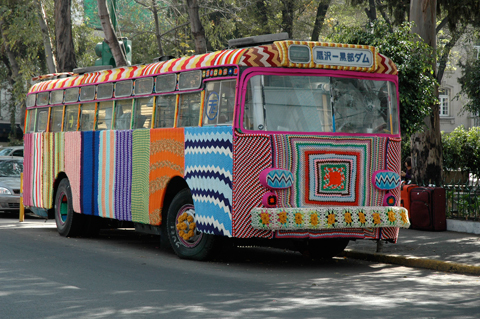 Bus von Knitta in Mexiko City, Foto: Cesar Ortega
Bus von Knitta in Mexiko City, Foto: Cesar Ortega
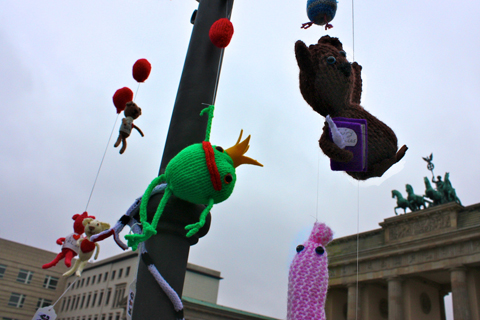 Knit the City's Bear-lin Luftballoons in Berlin
Knit the City's Bear-lin Luftballoons in Berlin
 Whodunnknit's Feline Flower Fest in Augsburg
Whodunnknit's Feline Flower Fest in Augsburg
 Knit the City's Handmade Herd in London, London Bridge
Knit the City's Handmade Herd in London, London Bridge
 Whodunnknit's Plarchie the Squid in London, Natural History Museum
Whodunnknit's Plarchie the Squid in London, Natural History Museum

 Love padlocks in Cologne, Foto: Matthieu Riegler, Wikimedia Commons
Love padlocks in Cologne, Foto: Matthieu Riegler, Wikimedia Commons
 the Madison Knitters' Guild cooperated on a 'yarn bombing' of a Madison Metro bus shelter
the Madison Knitters' Guild cooperated on a 'yarn bombing' of a Madison Metro bus shelter
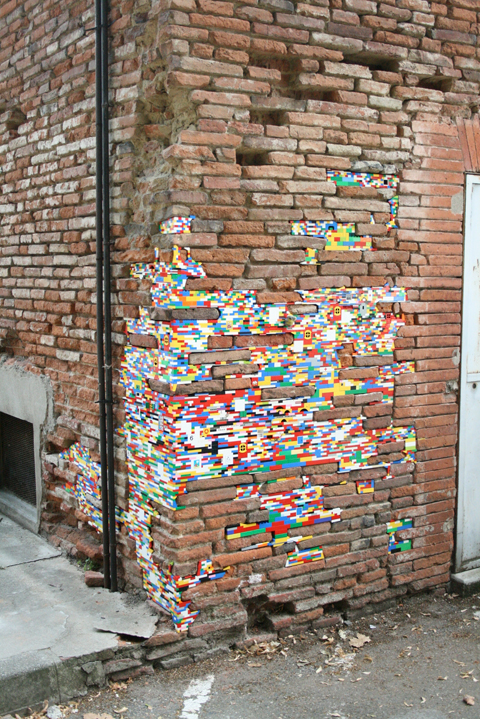 Work by Jan Vormann, Dispatchwork in Toulouse
Work by Jan Vormann, Dispatchwork in Toulouse
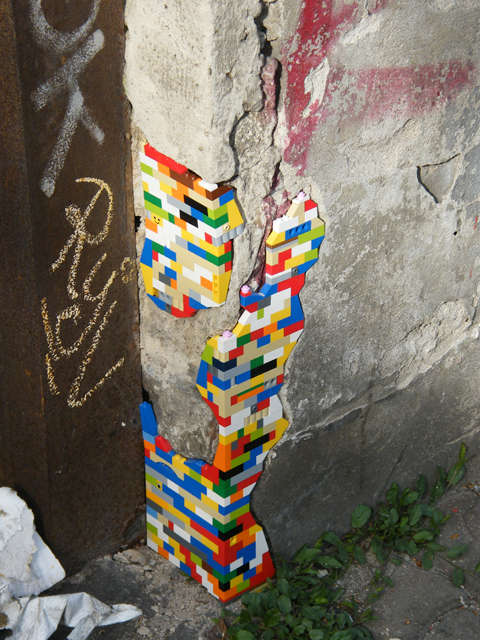 Work by Jan Vormann, Dispatchwork in Berlin
Work by Jan Vormann, Dispatchwork in Berlin
 Work by Jan Vormann, Dispatchwork in Toulouse
Work by Jan Vormann, Dispatchwork in Toulouse
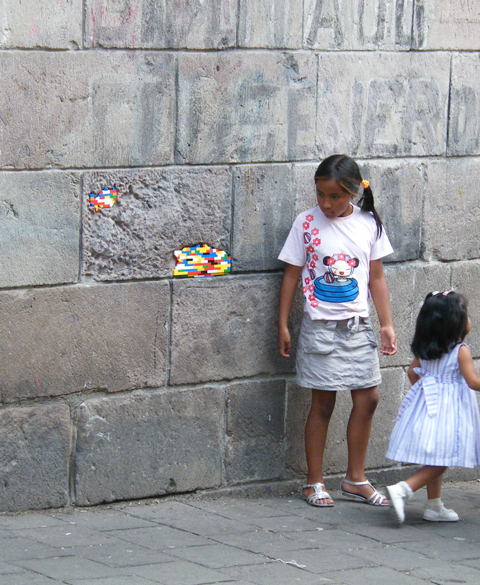 Work by Jan Vormann, Dispatchwork in Quito
Work by Jan Vormann, Dispatchwork in Quito
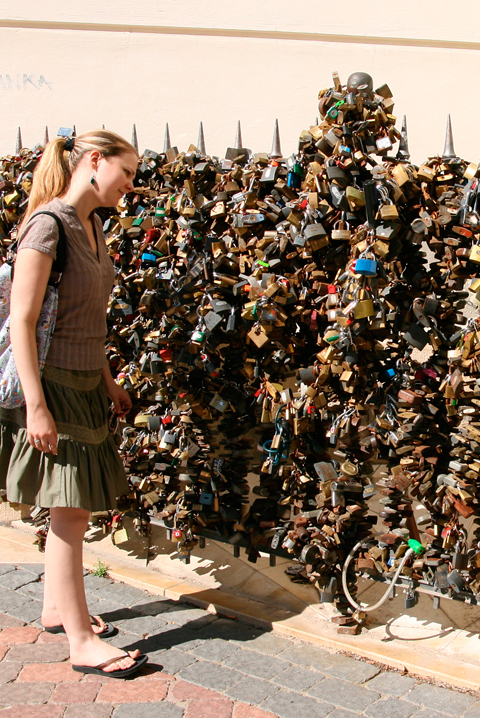 love locks in Péc, Foto: vikkvakk
love locks in Péc, Foto: vikkvakk
 Knit the City's Telephone Cosy in London, Parliament Square
Knit the City's Telephone Cosy in London, Parliament Square
 love padlocks in Moscow, Foto: A.Savin
love padlocks in Moscow, Foto: A.Savin
 Knit Knot Tree by the Jafagirls in Ohio, Foto: Shrewdcat
Knit Knot Tree by the Jafagirls in Ohio, Foto: Shrewdcat
 This is a teaser featuring Magda Sayeg of the feature documentary about Yarn Bombing
This is a teaser featuring Magda Sayeg of the feature documentary about Yarn Bombing
 How to knit a giant blanket
How to knit a giant blanket



